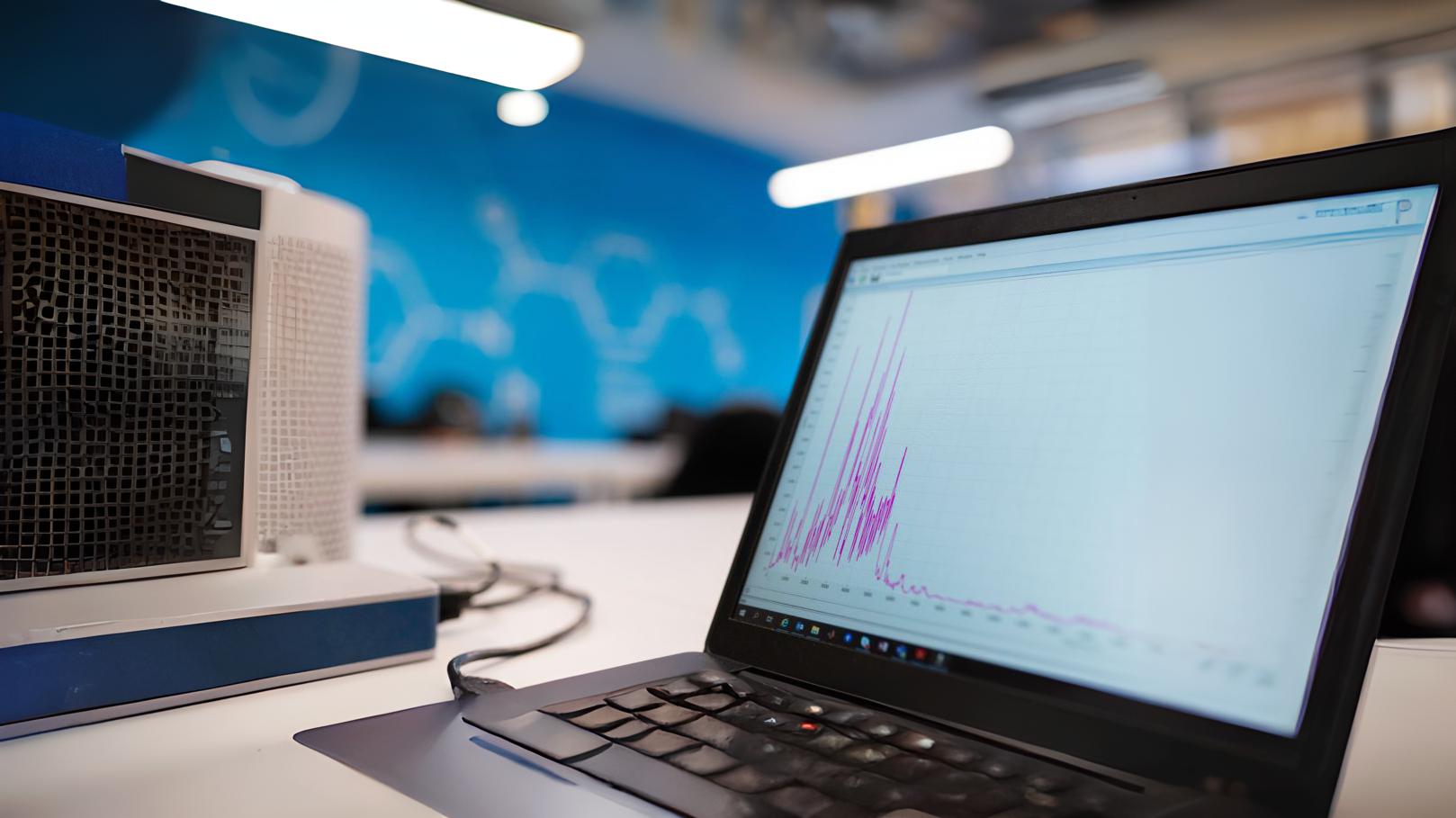Blockchain, Data mining, and Disruptive Technologies: Digital Innovations in Clinical Research
 3 years ago
By Charlotte Di Salvo
3 years ago
By Charlotte Di Salvo

In the last decade, innovations in data technology have greatly contributed to the quality and transparency of clinical research. System security, clinical trial design, and data analysis are some of the areas which have seen significant modernisation to keep up with clinical demand. The following examples are some of the data innovations emerging within clinical research with a possible transition away from traditional methodology.
For daily articles on the latest pharma trends and innovations, as well as interviews with leading experts and in-depth industry White Papers, subscribe to PharmaFeatures.com.
Blockchain
Blockchain technology is a shared system for recording transactions, tracking assets and building trust in a network. Data is spread across a large network of databases in replica copies, rather than a single store. The benefit of this is that stored data is less vulnerable to hacking or infringement. Furthermore, the system involves verification steps which ensures the data is protected against unauthorised intervention.
These properties have made blockchaining a desirable asset for clinical research. The storage and processing of sensitive data such as patient medical records and clinical trial data is of paramount importance. As a secure, distributed datastore, blockchain has the potential to provide the data transparency that clinical research needs. A 2019 Frontier article reinforces this point describing how such an approach could help improve the transparency and trustworthiness of clinical trials and benefit the whole clinical research ecosystem”. There are three fundamental properties of blockchain that make it desirable for clinical studies: time-stamping, time-ordering and smart contracts.
Within the decentralised store of blockchain are ordered records called blocks. Each block is time-stamped and can be updated by a majority of users. The information cannot be erased and the datastore is not ruled by any trusted third party. The benefit of time-stamping emphasises the integrity of data storage which is consistent and secure. In terms of time-ordering, “event consistency allows for checking the integrity of all time-ordered events”.
Blockchain creates a datastore which is incorruptible and traceable.This prevents “a posteriori reconstruction and allows for securely automating the clinical trial”. These are also known as Smart Contracts. These three core functionalities ensure clinical data is controlled and secure with shareable parameters whether it be for patients or clinical trial stakeholders.
Data mining
According to IBM, data mining is the process of “uncovering patterns and other valuable information from large data sets”. This is also known as knowledge discovery in data (KDD). Data mining techniques can be used to either describe a target dataset (descriptive) or predict outcomes via machine learning (predictive).
There are four main steps in data mining: “setting objectives, data gathering and preparation, applying data mining algorithms, and evaluating results”. All four steps in sequence enable the mining of data and identification of patterns without prior research and design.
Data mining is an important tool in clinical research, identifying trends and patterns within stored medical records and follow-up data. The main benefits of data mining in clinical research include searching for potential relationships from medical data to gain effective knowledge of diagnosis and treatment of patients in addition to increasing the accuracy of disease prediction.
Association analysis is an example of a descriptive data mining technique used to search for frequent patterns or correlations between data within large datasets. It is worth noting that data mining is not expected to replace traditional research methods, but rather as an extension of statistical analysis.
Outlier detection models signify novelty, anomaly, noise, variation or could be categorised under mining exceptions. In the context of clinical research, this data mining technique could be used to identify human error or negligence in clinical data entry. This is an important part of reducing inaccurate data that could otherwise lead to a misconception of results. In addition to detecting incorrect data, the presence of outliers could lead to novel insights in clinical knowledge discovery.
Disruptive technologies
Beyond these traditional clinical research methods are so-called ‘disruptive innovations’, of which there are many examples seen recently. One of the most obvious is the emerging popularity of telemedicine. Digital health tools like Fitbit watches allow the collection of huge volumes of data that can be accessed remotely by clinicians. These devices are user friendly, allowing subjects to perform as they would day-to-day. The benefit of this enables the collection of raw, real-world data in comparison to clinic visits which may not reflect true behaviour or physiology.
Mobile applications are frequently being used to report patient outcomes. Patient engagement apps also enable participants to become more involved in clinical trials, with access to documentation which explains complex clinical and scientific terminology. Informed consent can also be collected electronically. These innovations provide patients with the accessibility and transparency they require to feel comfortable throughout clinical trials, potentially improving overall patient retention. Digital health technologies may give trial participants a choice of participating from the convenience of the home rather than traveling to a trial site, which can increase participant engagement and retention.
Decentralised clinical trials (DCTs) offer a more patient-centric approach to clinical research.
Digital health is a key components within decentralised clinical trials which collect data safely and efficiently from the comfort of a patient’s home. The number of virtual clinical trials that emerged during the pandemic allowed clinical research to continue with limited site visits and patient recruitment. In terms of clinical operations, DCTs can reduce the time and financial burden of managing patients at sites across the globe.
In unprecedented circumstances, digital innovations in clinical research enabled clinical trials to continue running in extenuating circumstances. However, the success of virtual clinical trials also demonstrated the benefits of a patient-centric approach to clinical research. Disruptive technologies, data mining and blockchain technologies are a few examples of the digital innovations that have streamlined clinical trials, transitioning from traditional to modernised operations.
To discuss these topics further with sector experts, and to ensure you remain up-to-date on the latest in clinical development, sign up for Proventa International’s Clinical Operations Strategy Meeting, set for 15 June 2021.
Charlotte Di Salvo, Junior Medical Writer
Proventa International

Navigating the Complex World of Global Regulatory Affairs in Oncology
In today's fast-paced global pharmaceutical landscape, the regulatory affairs sector plays a pivotal role in ensuring the safety, efficacy, and market access of oncology drugs. As the demand for innovative cancer therapies continues to grow, understanding the intricacies of global...
1 year agoNavigating the Complex World of Global Regulatory Affairs in Oncology
In today's fast-paced global pharmaceutical landscape, the regulatory affairs sector plays a pivotal role in ensuring the safety, efficacy, and market access of oncology drugs. As the demand for innovative cancer therapies continues to grow, understanding the intricacies of global...
1 year ago
Overcoming the Hurdles: Navigating the Challenges in Oncology Clinical Trials
In the world of medical research, oncology clinical trials are at the forefront of innovation and discovery. These trials play a crucial role in advancing our understanding of cancer and developing more effective treatments. However, the path to successful oncology...
1 year agoOvercoming the Hurdles: Navigating the Challenges in Oncology Clinical Trials
In the world of medical research, oncology clinical trials are at the forefront of innovation and discovery. These trials play a crucial role in advancing our understanding of cancer and developing more effective treatments. However, the path to successful oncology...
1 year ago
Embracing a Patient-Centric Approach in Oncology Trials
In the realm of healthcare and medical research, the term "patient-centric" has gained significant traction in recent years. This shift in focus towards prioritizing patients' needs and preferences is not only transforming the healthcare industry but is also making waves...
1 year agoEmbracing a Patient-Centric Approach in Oncology Trials
In the realm of healthcare and medical research, the term "patient-centric" has gained significant traction in recent years. This shift in focus towards prioritizing patients' needs and preferences is not only transforming the healthcare industry but is also making waves...
1 year ago